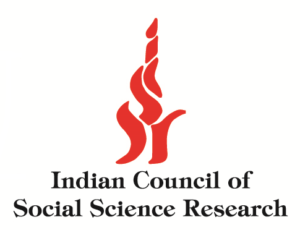Twitter Speaks: Pandemic, Environment, and Public Perception
When the COVID-19 pandemic brought the world to a standstill, it didn’t just change the way we lived—it also created ripples in the environment. Air quality improved temporarily as cities went quiet, but pollution from single-use plastics skyrocketed due to the use of masks and safety gear. Amid this unprecedented time, Twitter became a window into public perceptions, and Dr. Krishna Malakar and colleagues decided to take a closer look.
By analyzing over a year’s worth of tweets, the study titled “Twitterati on COVID-19 pandemic-environment linkage” explores how people around the world connected the dots between the pandemic and environmental issues.
What Did the World Tweet About?
From March 2020 to May 2021, millions turned to Twitter to voice their thoughts on COVID-19 and the environment. By mining these tweets, the researchers uncovered key trends. Here’s what stood out:
- Drawing Parallels with Climate Change: Many tweets reflected on the pandemic as a warning for the larger climate crisis looming ahead. The public saw the economic disruptions and health impacts of COVID-19 as a snapshot of what unchecked climate change might bring.
- Pollution and Plastic Concerns: Air pollution became a hot topic, especially during lockdowns when smog cleared in cities worldwide. However, tweets also highlighted growing worries about plastic pollution, with images of wildlife harmed by discarded masks sparking outrage.
- Disaster Management in a Pandemic: Extreme weather events like floods, cyclones, and bushfires didn’t pause for the pandemic. Tweets often pointed out the challenges of evacuations and aid distribution under lockdown conditions.
- Trending Topics: Keywords like “flood,” “cyclone,” and “climate change” dominated conversations, often peaking during major disasters. Surprisingly, more technical terms like “climate resilience” and “climate adaptation” were less frequent, hinting at a gap in public awareness of these concepts.
What Makes This Study Unique?
While studies using Twitter data have been around for years, this research stands out for its focus on the pandemic-environment connection. The team developed a Python-based tool to analyze massive datasets, tracking tweets from verified accounts, hashtag use, and even user locations.
The result? A detailed map of global discussions, revealing that the U.S. and India led the charge in tweeting about environmental issues. The findings also underscore a tendency to focus on disasters affecting English-speaking countries, leaving regions like drought-hit Africa less represented.
Why It Matters
This study is more than a dive into social media—it’s a glimpse into the collective consciousness during a global crisis. By understanding what topics resonated most, policymakers can better craft communication strategies for climate action.
For instance, the study highlights the public’s interest in tangible environmental impacts, such as pollution and disaster responses, over abstract policy terms like “mitigation” or “adaptation.” Tailoring messages to align with these interests could foster greater engagement in climate initiatives.
A Hopeful Sign
Amid the noise, one thing is clear: people care. The Twitterati’s focus on environmental issues, even during a health crisis, is a promising sign of growing awareness. It’s a call to action for individuals and governments alike to seize this momentum and push for sustainable solutions.
Conclusion
As the world emerges from the shadow of COVID-19, this study reminds us of the interconnectedness of global challenges. Just as the pandemic highlighted our vulnerabilities, it also revealed our capacity for reflection and change. And sometimes, it takes a tweet to start a movement.





